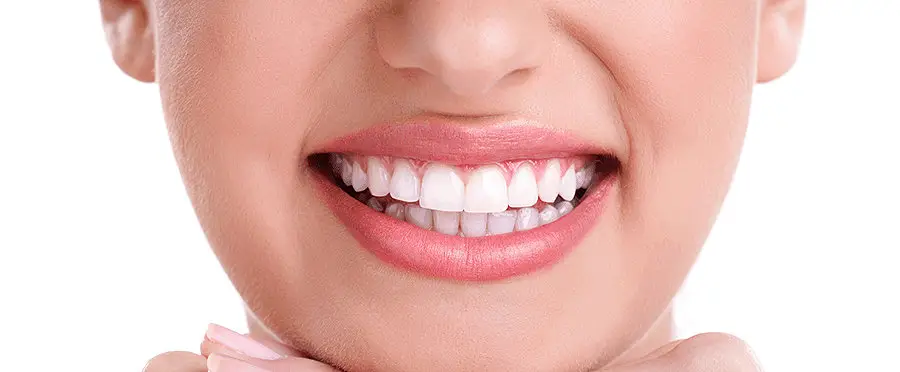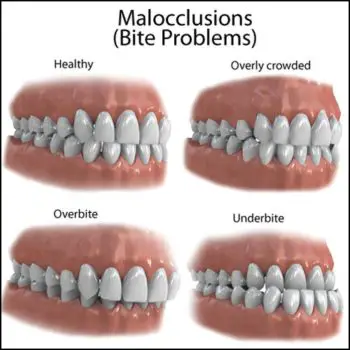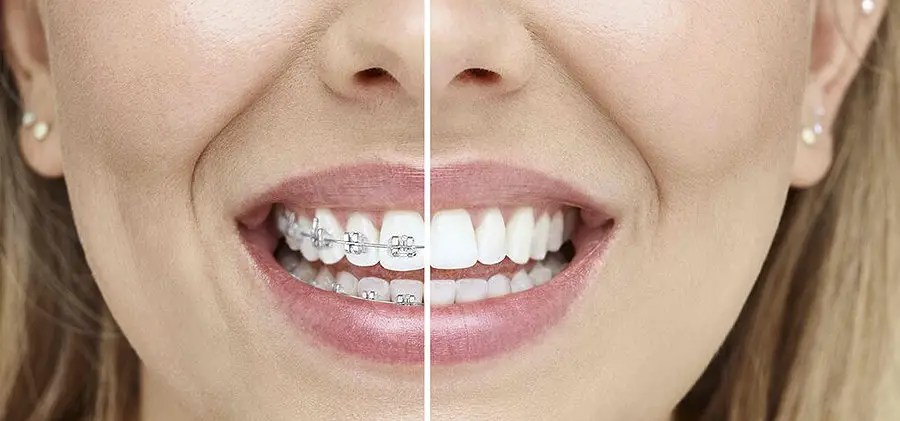
Mewing is all about correcting your tongue posture, swallowing technique, and more to enhance your facial features. However, you need to think about the small details to make sure you are mewing correctly, such as touching your teeth.
Your teeth should very lightly touch whenever you mew. You do not want to clench your teeth or let them fully touch. However, some people may not be able to make their teeth touch because of problems like malocclusion.
Why Your Teeth Should Lightly Touch While Mewing
Facial upswing refers to when your face moves up and forwards, which is good craniofacial development. When you mew, your teeth should lightly touch and be close because it creates facial upswing.
When you apply pressure on your palate (along with keeping your teeth and jaw in the right position), you apply pressure to your maxilla. The pressure encourages your facial bones (cheekbones, maxilla,etc.) to grow upward, which will help you get higher cheekbones, cheek hollows, and more.
While proper tongue posture and pressure are essential to help you achieve facial upswing, you should not forget your teeth.
To learn more about how you can mew correctly, see our guide.
You do not want to clench your teeth or put too much pressure on them when you close your mouth. It can make you grind your teeth and engage your buccinator muscles too much, causing puffier-looking cheeks.
Some people find it hard to mew without clenching their teeth. You can focus on relaxing your jaw while mewing to help keep your teeth close but not clenched.
Some people may find it hard to get used to the jaw position. However, it will become second nature the more you do it. Being conscious of how close your teeth are will help you correct your mewing technique.

What You Need to Know About Malocclusions
If you have malocclusions, then you have a misalignment issue. A lot of people have some degree of malocclusion (Alam et al., 2018). If left untreated, especially if you have a severe case, it can lead to serious oral problems.
Malocclusions can make it hard or impossible for you to make your teeth naturally and lightly touch while mewing. Some types of malocclusions will not let some of your teeth touch. Malocclusions like an open bite will not allow all or nearly all of your teeth to touch when you close your mouth.
If you have a malocclusion, you may have a misalignment of the bite and teeth. Some people may not notice their symptoms. However, some people find it inconvenient and painful.
Some common symptoms of malocclusions are:
- Changes in your overall face structure
- Frequently biting your cheeks or tongue
- Finding it hard to breathe through your mouth
- Speech problems
- Feeling discomfort when you chew or bite food
- Misaligned teeth
There are three different classes of malocclusions. Each class has their own types. The classes and their types are:
Class 1:
This kind of malocclusion is the most common type. The upper teeth slightly overlap the lower teeth, but your bite is still normal.
Type 1: The teeth angle towards the tongue.
Type 2: It includes narrow dental arches, and the upper teeth stick out. The lower teeth also lean towards the tongue.
Type 3: Upper teeth angle towards the tongue. There is also crowding.
Class 2:
The maxilla and upper teeth abnormally overlap the mandible and lower teeth. It is an overbite.
Type 1: Upper teeth angle toward your lips.
Type 2: Upper central incisors angle toward your tongue.
Class 3:
The mandible and lower teeth overlap the maxilla and upper teeth. This is an underbite and can include a crossbite.
Type 1: Overall good teeth alignment, but an abnormal arch shape is present.
Type 2: Normal upper teeth alignment, but your lower front teeth angle towards your tongue.
Type 3: Underdeveloped upper arch. Good lower teeth alignment, but your upper front teeth angle toward your tongue.
Types of Malocclusions:
- Open bite
- Missing tooth
- Impacted tooth
- Diastema
- Spacing
- Underbite/Anterior crossbite
- Crossbite
- Overbite
- Overjet
- Crowding
Malocclusions are often inherited. However, some habits and conditions can also cause malocclusions. Check out t his looks theory episode for more info on malocclusions and their impact on facial aesthetics:
Some common causes of malocclusions include:
- Obstructed airway caused by allergies or enlarged adenoids
- Insufficient oral care
- Impacted tooth
- Bottle feeding
- Jaw or mouth tumors
- Trauma and injuries
- Cleft palate and lip
- Prolonged finger and thumb sucking
- Prolonged pacifier use
- Tooth loss
The biggest cause of malocclusion, though, is poor tongue posture and lack of hard foods. Make sure you stay on top of this, especially if you’re young.
How To Make Your Teeth Touch While Mewing

Some people cannot make their teeth touch while mewing, usually because of malocclusions. You can correct your bite to make your teeth lightly touch while mewing by visiting a dentist or orthodontist.
Your dentist or orthodontist may suggest the following to correct your bite:
Braces
You can get fixed ceramic or metal braces to correct a malocclusion. These are usually best for people who have serious misalignment. The braces will help fix the position of your teeth and enhance alignment.
You may also ask your orthodontist or dentist if you can get lingual braces. These braces are behind your teeth instead of the front, which can be appealing for people who do not want to wear traditional braces.
Invisalign
If you are concerned about the look of traditional braces, then you can opt for Invisalign. However, you need to consult your dentist or orthodontist. Invisalign isn’t as powerful as braces but can work for people with less severe misalignment.
Teeth Extraction
Your orthodontist or dentist may remove one tooth or several teeth to correct your malocclusion. Tooth removal can help people who have overcrowding. Removing teeth will help create more space to move your existing teeth. You may get braces after tooth removal, but it depends on your case.
But be very careful with extracting teeth, because if you leave extra space in your gums, the bone there will reabsorb. Also, you will have fewer teeth in contact, creating pressure on your maxilla and mandible. Many people’s facial aesthetics got worse after undergoing unnecessary extractions. You should instead find a way to make more room in your jaw for your existing teeth.
Surgery
Surgery gets offered to people who have very severe cases of misalignment. For instance, surgery might be right for patients with a maxilla and mandible that do not align and greatly inconveniences the patient. The operation moves the jaw so it will be in a better position to achieve proper alignment.


